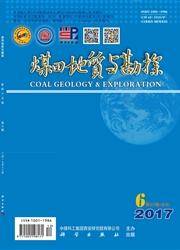

 中文摘要:
中文摘要:
针对工程地质和岩土工程中所涉及到的冻害问题,在质能平衡的基础上,充分考虑冻结岩体的热传导、水和岩体存在的热交换以及水热梯度共同作用下水分的迁移与转化,建立了水热耦合的非线性控制方程;对寒区大阪山隧道围岩的温度场和水分场进行数值模拟,并分析其水热耦合迁移规律。模拟结果表明:隧道围岩水分受冻结抽吸力和温度梯度的作用发生迁移,在隧道边墙处渗流速度最大;在考虑水分场时,隧道围岩的冻结圈将变薄,而且随着水分场中渗流系数的增大将更加变薄,水分场在很大程度上影响温度场的分布;为了减少冻害对寒区工程的破坏,应采取良好的保温措施。模拟结果与现有研究成果和工程经验类似。
 英文摘要:
英文摘要:
The frozen disaster is a problem not to be ignored in geotechnique and engineering field. According to the balance of mass and energy, a nonlinear governing equation for the coupled problem of moisture-heat is established by considering the heat conduction, moisture and mass exchange, the heat and moisture gradient on the seepage. The temperature field and moisture field in the surrounding rock of Dabanshan tunnel in the cold region is numerically simulated, the law of moisture-heat coupling transfer in the rock tunnel is analyzed. The simulating result shows that the moisture transfer under frozen force and temperature gradient, it's velocity at the side wall is maximum; the frozen circle will be thinner when taking into account the moisture field and be much thinner if the seepage coefficient be increased, the moisture field influences the redistributing of temperature field greatly; The suitable heat preservation measures must be taken in order to reduce engineering damage under the frost and thaw condition in cold regions. The simulating result is similar to the current results and engineering experience.
 同期刊论文项目
同期刊论文项目
 同项目期刊论文
同项目期刊论文
 期刊信息
期刊信息
